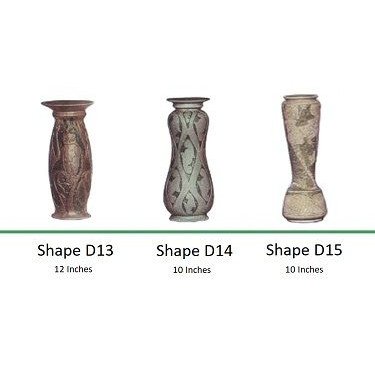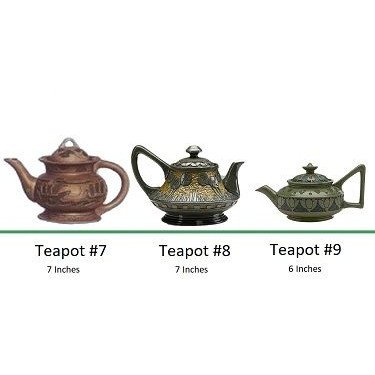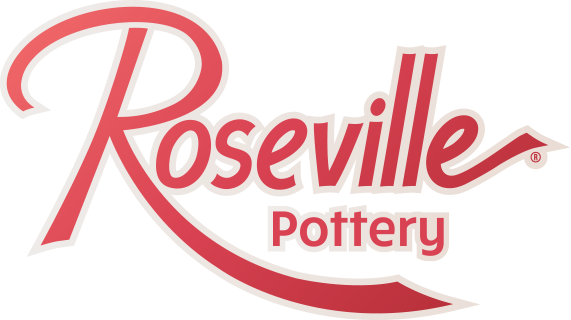
Collectors Guide to Roseville Pottery Early Della Robbia, 1904
What is Early Della Robbia?
Early Della Robbia is a line of art pottery produced in 1904 by the Roseville Pottery Company in Zanesville, Ohio.
Who designed The Early Della Robbia?
The Della Robbia line was designed by Frederick Rhead.
Following the rejection by the judges of all of the Roseville Pottery entries for the 1904 St. Louis Exposition, the company developed innovative techniques for new art pottery lines. Frederick Rhead pioneered a new way of making decorative vases and dubbed it "Della Robbia".
This pottery line was named for the 15th-century sculptor Luca Della Robbia (1400–1482) of Florence, Italy. Robbia won renown for his innovations in the medium of glazed terracotta, especially the brightly-colored glazes he used on deeply carved bas-relief friezes. Collectors of antique pottery at the time were well acquainted with Robbia's work, and a recent resurgence in interest in his sculptures made the association with his name an easy marketing decision for Roseville executives.
Roseville Della Robbia featured deeply incised designs, with edges and lines that were sharper than what could be accomplished through slip casting alone. It has been said that the Roseville Della Robbia line was an attempt to recreate etched cameo glass in a ceramic form. Interestingly enough, the Della Robbia line preceded the majority of French cameo glass production by nearly a decade. There was little in the Roseville Della Robbia products to warrant a connection with the work of Luca Della Robbia, but Roseville and other potteries at the time often took wide liberty with such associations.
The process for creating the Roseville Della Robbia was pioneered by Frederick Rhead. First, a design would be created for a particular vase, and traced onto tissue paper. This paper was then misted with water until damp, and then wrapped onto a slip-casted greenware vase. This vase would have been "double-cast", that is to say cast in one color of slip covering another. A pin was then used to poke holes into the greenware following the lines in the tissue paper, creating a basic "connect the dots" design. Once this was complete, a young girl would use tools custom-made from large darning needles to carve the design. A wooden handle was fit to the needles, and the needle eyes were used to remove the clay from the designs exposing the second layer of clay. This process allowed fairly complex designs to be repetitively performed by artists with only basic carving skills.
When was Early Della Robbia made?
The Early Della Robbia line was only produced in 1904.
Roseville Della Robbia was produced in two distinct phases. The first phase is referred to as Early Della Robbia, and was produced in 1904. There were 18 vase forms used, all of which are identical to the shapes used in the Aztec Line. These forms were designated as D1 through D18. In addition to the vase shapes, 12 tea and chocolate pots were produced simply designated as 1 through 12. Unlike the Rozane Della Robbia, each design used only two colors. Rozane Della Robbia also included colored glazes in the designs of up to six different colors on on a single vase.
Unlike many other lines of the time, Roseville was strict about the adherence to the designs of Della Robbia. While some color variety can be found, the designs themselves remained standardized from piece to piece.
The Early Della Robbia was followed in 1905 by the Rozane Della Robbia, with many new forms and designs. Very few pieces of the Early Della Robbia have survived, making this line one of the most difficult and expensive of Roseville Pottery to collect.
Below are the shapes offered in the Roseville Pottery Early Della Robbia line.
-

Early Della Robbia Catalog 1
-

Early Della Robbia Catalog 2
-

Shapes D1-D3
-

Shapes D4-D6
-

Shapes D7-D9
-

Shapes D10-D12
-

Shapes D13-D15
-

Shapes D16-D18
-

Teapot 1-3
-

Teapot 4-6
-

Teapot 7-9
-

Teapot 10-12
If you have more questions, we are certain you will find the answers in the following books. Each of these books is highly recommended for collectors of Roseville Pottery. The owners of this website may receive compensation for qualified sales of the books.




